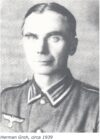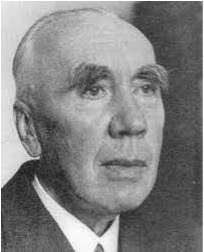Good Friday
When we hear the story of the Last Supper we know already what will happen and what comes next: the martyrdom, His death, and resurrection. Of course it was not that way for His disciples when He had the meal with them. He was speaking in riddles to them. He kept them guessing about the future. Every event that followed was another riddle: Gethsemane, the sleep that overcame them, the capture, the flight. None of them was able to stand by Him to the end. Of course not, none of us would be able to maintain our footing in such circumstances. How could a person at that time ever foresee that the last evening meal would not only be followed by the first morning meal of the Resurrected One, and that He from now on would give Himself, day in day out, in bread and wine, to every human being who hungers and thirsts for His presence?
At the end of His life on earth, Christ indicates with an unusual word that this end is the beginning of a completely new life. Of all the disciples only John was present as witness when this last word sounded on the cross: “It is fulfilled.” He is the only evangelist who wrote this word from the cross down. What is so special in these words?
Christ here used an expression that originated in the old mysteries: tetelestai. It means something like: the goal has been reached. (telete was the ancient word for initiation. The place where the initiation took place was called in Eleusis: telesterion.) The expression tetelestai is no finality, but an indication of a completely new life. From then on the initiate stood on the other side of the threshold and was at home with the Gods. From the other side he could order life on earth according to the hermetic principle: As above, so below. The holy order of heaven had to be reflected in life on earth.
Where was Christ after He had spoken His last words? He too crossed a threshold, but not to go to the Gods, but to the demons and the dead. In the three days after His death He was not in heaven, not on earth, but “in the heart of the earth.” (Mat. 12:40) There He brought light into the hopeless existence of death and the underworld. There the germ of a new heaven and a new earth was planted.
Since His death and resurrection every death experience can become the germ of a new life. For whoever dies in Christ walks with Christ through death into deathless life.
Rev. Bastiaan Baan, Good Friday 2024

 Herman Groh was a man of the world who broadened his education throughout his life. He spoke many languages and understood several more. Outwardly, Groh’s life took him first to Russia, Siberia, and Vladivostok during the First World War, and then (1928) to California for 6 months. In other words, he traveled from East to West before settling in the center, where he focused his energies. This also seems to correspond to the major inward gesture of his life.
Herman Groh was a man of the world who broadened his education throughout his life. He spoke many languages and understood several more. Outwardly, Groh’s life took him first to Russia, Siberia, and Vladivostok during the First World War, and then (1928) to California for 6 months. In other words, he traveled from East to West before settling in the center, where he focused his energies. This also seems to correspond to the major inward gesture of his life.
 Dr. Rudolf Frieling has been one of the most important representatives of the Christian Community since its founding. As a priest, he co-founded the congregations in Leipzig, Vienna, and New York. He made his influence felt through countless lectures and important writings, as well as through the publication of the magazine for the Movement for Religious Renewal. He was a leading teacher at the priest seminary for 50 years. He was part of the Movement’s leadership starting in 1929, before ultimately taking over as Erzoberlenker in 1960 and serving in that central position for 25 years.
Dr. Rudolf Frieling has been one of the most important representatives of the Christian Community since its founding. As a priest, he co-founded the congregations in Leipzig, Vienna, and New York. He made his influence felt through countless lectures and important writings, as well as through the publication of the magazine for the Movement for Religious Renewal. He was a leading teacher at the priest seminary for 50 years. He was part of the Movement’s leadership starting in 1929, before ultimately taking over as Erzoberlenker in 1960 and serving in that central position for 25 years.